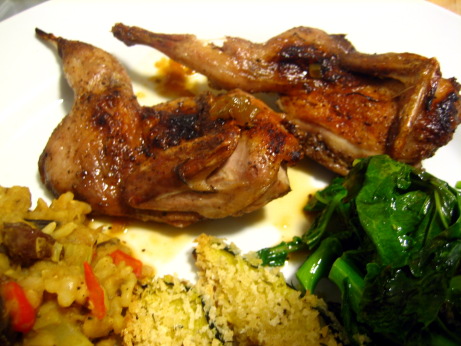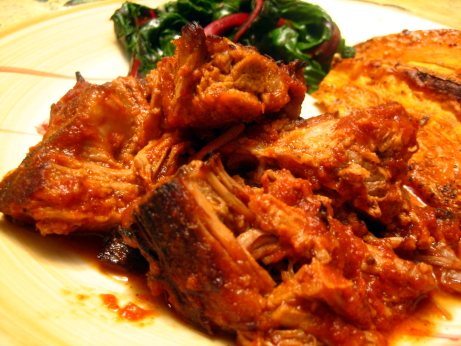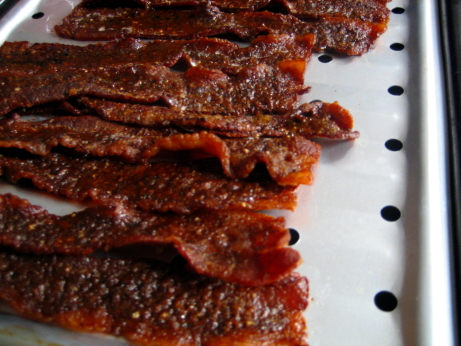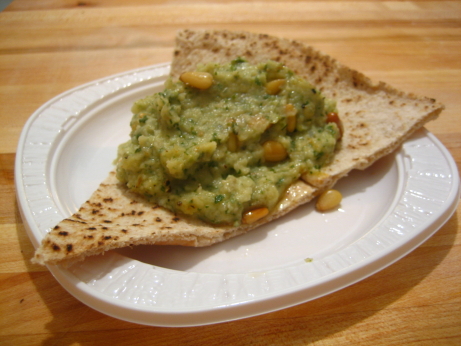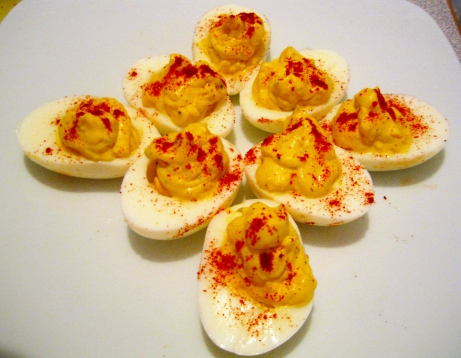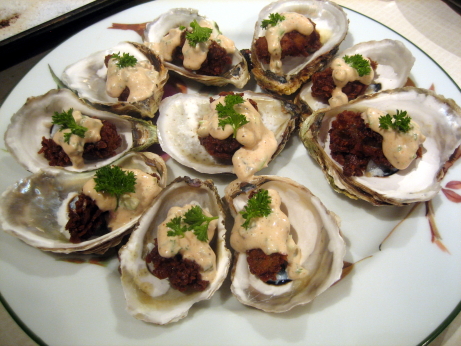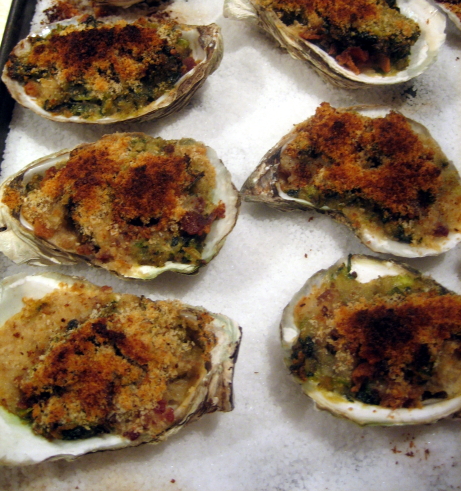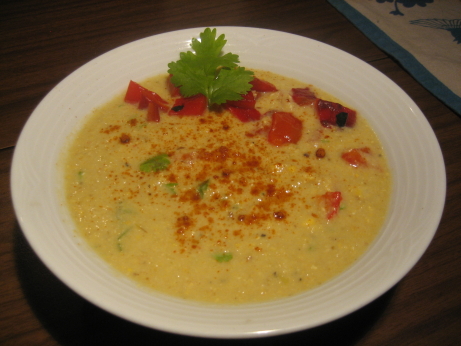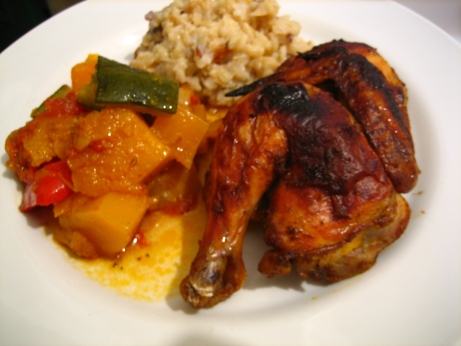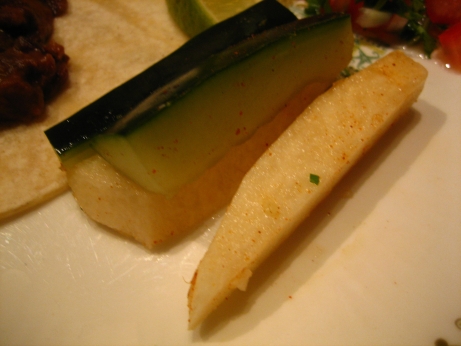I like to think of quail and lobster as perverse challenges on a Japanese game show. They’re complicated and messy to eat, but you’re challenged to do it in your finery with your peers looking on. I can imagine the quiet golf claps from the spectators as you deftly separate the leg joint, and the derision of the judges and jeers from the peanut gallery as you forget your manners and start gnawing on the wings. There are loads of public forums for messy lobster eating, where plastic bibs rule and squirting lobster juice into your dining companions’ hair is considered to be all part of the fun, but very few community organizations seem to throw an annual quail bash, so I prefer to keep small fowl eating confined to my home.
These quail are supposed to be semiboneless, where your butcher has removed all but the wing bones, and the drumstick. I’m sure that would make the eating a lot neater, but it probably costs an arm and a leg, so we ripped our meat off the bone with our teeth thank-you-very-much. The boned out quail are cut in half, rubbed with salt, pepper, cayenne, and allspice, then chilled for a hour, and cooked under the broiler. The quail are served with a gastrique made with chicken stock, lime juice, molasses, scallions, and butter.
The Good: These quail were just delicious. The spice rub did very nice things for them, quail are fairly flavourful birds, so they were able to stand up to the allspice and cayenne. The quick broiling they received was a really nice way to cook them. Unlike chicken you’ve got to cook them as quickly as possible to get the outside nicely crisped before the meat gets overdone, intense direct heat from the broiler seems to be the ideal solution. They’d probably work well quickly grilled over an intense flame.
The Bad: While there was nothing wrong with the gastrique, I thought it was more or less unnecessary. The quail were a complete package on their own, they weren’t begging for an acidic caramel sauce. I tried some of the gastrique with the quail, and it just covered up some of the bird’s deliciousness. Sometimes I think people make gastriques more because they look nice drizzled decoratively on the plate, or painted on with bold brush strokes than any underlying culinary theory. In this case they didn’t do much for the quail, so I’d skip it. However it might depend on what you’re serving it with, a sweet and acidic sauce like this can go a long way towards tying a meal together.
The Verdict: Make the birds, skip the sauce, eat with close friends and loved ones, don’t worry about making a mess.
